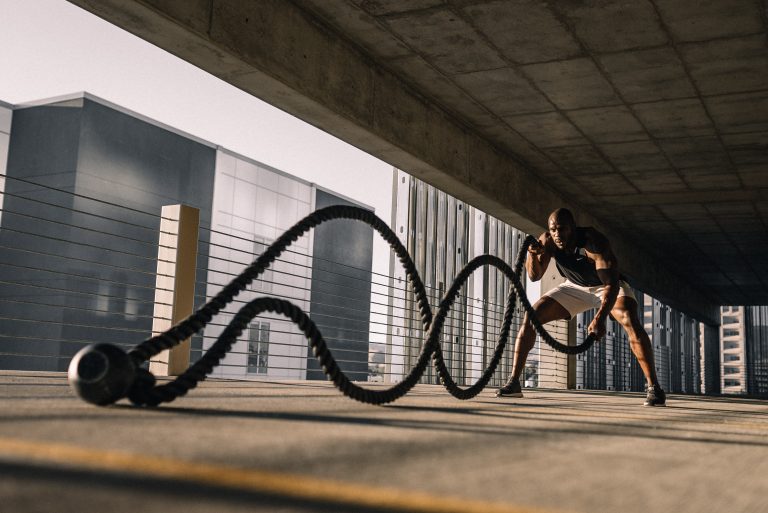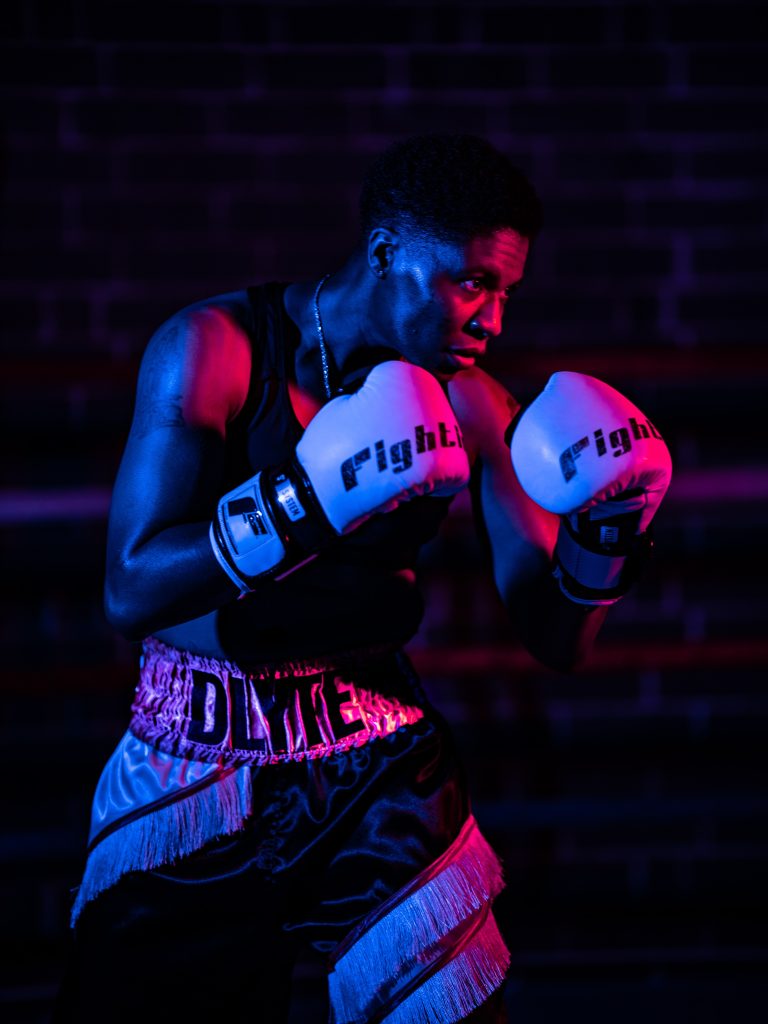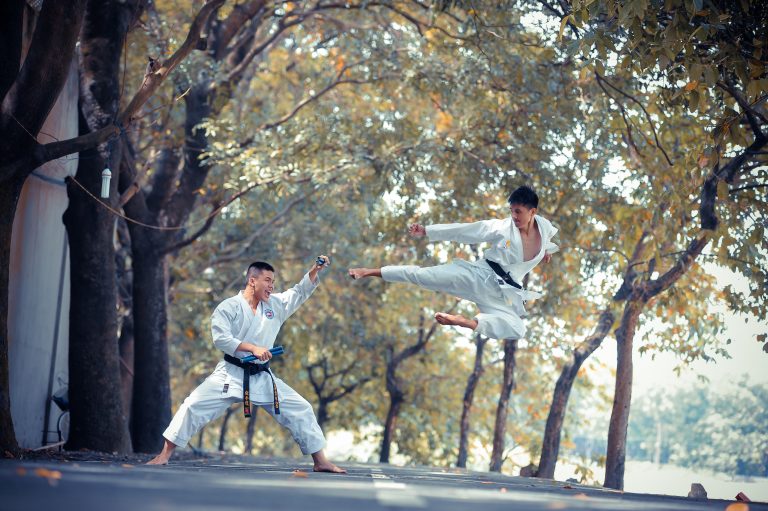Shotokan Karate Gürtel und Katas
Shotokan Karate ist eine der bekanntesten Karate-Stile weltweit. Die Schüler des Shotokan-Karate tragen Gürtel, die ihre Fähigkeiten und ihren Fortschritt innerhalb des Karate-Stils widerspiegeln. In diesem Artikel werden wir uns die verschiedenen Shotokan Karate Gürtel und Katas ansehen.
Shotokan Karate Gürtel
Shotokan Karate Gürtel haben eine einzigartige Farbkombination, die den Fortschritt des Schülers in der Kunst widerspiegelt. Es gibt neun Shotokan-Karate-Gürtel, die in der Reihenfolge des Fortschritts getragen werden:
- Weiße Gurte – Anfänger
- Gelbe Gurte – Der Schüler lernt die Grundtechniken
- Orange Gurte – Der Schüler macht Fortschritte und entwickelt Karate-Grundlagen
- Grüne Gurte – Der Schüler lernt, seine Techniken zu verfeinern und zu perfektionieren
- Blau Gurte – Der Schüler erreicht ein höheres Niveau in Karate und beginnt, anspruchsvollere Techniken zu lernen
- Braune Gurte – Der Schüler macht Fortschritte und wird sich seiner Fähigkeiten und Stärken immer bewusster
- Schwarze Gurte (1. bis 3. Dan) – Der Schüler hat das höchste Niveau in Karate erreicht.
- Roter & Schwarz Gürtel (4. bis 6. Dan) – Der Schüler ist ein Experte in Karate und hat viel Erfahrung in der Praxis.
- Weißer Gürtel (7. bis 10. Dan) – Der Schüler ist ein Meister in Karate und hat eine tiefe Kenntnis und Verständnis des Stils erlangt.
Shotokan Karate Katas
Katas sind festgelegte Formen von Techniken, die die Schüler auswendig lernen und in einer bestimmten Reihenfolge ausführen müssen. Shotokan-Karate hat 26 Katas, die in drei Gruppen unterteilt sind: Kihon (Grundlagen), Kata (Form) und Kumite (Sparring-Techniken).
Die Kihon-Katas sind die ersten beiden Katas, die jeder Schüler lernt. Die ersten beiden Katas sind sehr einfach und beinhalten grundlegende Techniken wie Fauststoß und Tritttechniken.
Das nächste Level ist das Kata-Level. Es gibt insgesamt 22 Katas, die innerhalb des Shotokan-Karate-Stils geübt werden können. Einige der bekanntesten Kata sind:
- Heian Shodan – Diese Kata ist die erste Kata im Shotokan-Karate und beinhaltet einfache Techniken wie Stöße und Tritte.
- Tekki Shodan – Diese Kata beinhaltet Techniken, die speziell für enge Räume oder dunkle Gassen entwickelt wurden.
- Bassai Dai – Diese Kata beinhaltet fortgeschrittene Techniken wie den Frontkick und Handflächenstoß.
- Kanku Dai – Diese Kata beinhaltet anspruchsvolle Techniken wie den Seitentritt und den Rückwärtssalto.
Das letzte Level ist das Kumite-Level. Dies beinhaltet fortgeschrittenes Sparring und Wettkampftechniken.
Fazit
Shotokan-Karate ist ein großartiger Kampfkunststil, der die Schüler nicht nur körperlich, sondern auch geistig stärkt. Das Tragen des Karate-Gürtels und das Erlernen des Katas sind wichtige Traditionen innerhalb des Stils und spiegeln den Fortschritt und die Fähigkeiten der Schüler wider. Wenn Sie sich für Karate interessieren, empfehlen wir Ihnen, eine Shotokan-Karate-Schule in Ihrer Nähe zu finden und mit dem Training zu beginnen.
Most Frequently Asked Questions About Shotokan Karate Belts and Katas
Karate is a popular form of martial arts that originated in Okinawa, Japan, and developed into different styles over time. Among these styles, Shotokan Karate is the most popular and widely practiced one in the world. It is a disciplined and rigorous form of karate that emphasizes the development of mental and physical strength, self-defense, and respect for others.
Shotokan Karate students follow a ranking system based on colored belts, where each level represents their skills and experience. The colored belts range from white to black, with various degrees of black belts. Kata is another vital aspect of Shotokan Karate that involves a series of pre-determined movements or patterns that a student performs to improve their techniques and focus.
Shotokan Karate students and enthusiasts often have many questions about belts and katas. In this blog post, we will answer some of the most frequently asked questions about Shotokan Karate belts and katas.
How does the Shotokan Karate belt system work?
The Shotokan Karate belt system is a structured ranking system that represents a student’s progress in the martial art. There are ten levels of belts, starting with the white belt and ending with the black belt, which has ten degrees or dan ranks. The student’s progress is assessed through various tests or exams that include demonstrating their skills, techniques, and knowledge of Shotokan Karate.
The process of advancing through the colored belts takes time and dedication, and the student must meet certain criteria before they are eligible for promotion. These criteria include attending classes regularly, demonstrating proficiency in basic techniques, and showing improvement in their katas. The higher the belt, the more rigor and complexity are expected from the student.
What is the significance of each Shotokan Karate belt color?
Each Shotokan Karate belt color represents different levels of progress and proficiency in the martial art. Here are the meanings and significance of each belt color:
- White belt: This is the starting belt that represents a new student’s innocence, lack of experience, and potential for learning.
- Yellow belt: This belt signifies the student’s first promotion and their progress towards basic techniques and understanding of Shotokan Karate movements.
- Orange belt: This belt represents the student’s increased ability in basic techniques, endurance, and spirit.
- Green belt: This belt signifies the student’s transition to intermediate levels of Shotokan Karate, where they learn more complex techniques and movements.
- Blue belt: This belt represents the student’s progress in Shotokan Karate and their dedication to the martial art.
- Purple belt: This belt signifies the student’s understanding of the deeper aspects of Shotokan Karate, including katas and self-defense techniques.
- Brown belt: This belt signifies the student’s mastery of basic techniques and their transition to advanced levels of Shotokan Karate.
- Black belt: This is the highest level of the Shotokan Karate belt system, which represents the student’s mastery of the martial art and their journey towards self-improvement and enlightenment.
What are Shotokan Karate katas?
Kata is a form of training in Shotokan Karate that involves a series of pre-determined movements or patterns that simulate combat situations. The student performs katas alone, with a partner, or in a group, and each kata has its distinct set of movements, techniques, and breathing patterns.
The practice of katas helps improve the student’s balance, coordination, timing, focus, and technique. It also helps develop muscle memory, discipline, and the ability to apply techniques in real-life situations.
There are many different Shotokan Karate katas that vary in difficulty and complexity, with some katas having up to 65 movements or more. The most commonly practiced katas include Heian Shodan, Heian Nidan, Heian Sandan, Heian Yondan, and Heian Godan.
How do Shotokan Karate students learn katas?
Shotokan Karate students learn katas through a structured process that involves watching, practicing, and memorizing the techniques and movements. The process typically involves the following steps:
- The instructor performs the kata in front of the students, demonstrating the techniques, movements, and breathing patterns. The students watch and pay close attention to the demonstration.
- The instructor breaks down the kata into smaller parts and explains each technique in detail. The students practice each technique separately until they get it right.
- The students start practicing the kata as a whole, gradually building up to the full kata over time. The instructor corrects any mistakes or deficiencies and provides guidance on how to improve the techniques and movements.
- Finally, the students perform the kata in front of the instructor, who assesses their performance and provides feedback. If the student performs the kata satisfactorily, they may be eligible for promotion to the next belt level.
What is the significance of Shotokan Karate katas?
Katas are an essential component of Shotokan Karate that serve several purposes. They help improve the student’s technique, movement, and focus, and they teach the student how to apply the techniques in real-life situations. Kata also helps develop mental and physical discipline, endurance, and perseverance, which are essential qualities for any martial artist.
Katas also represent the history and culture of Shotokan Karate and its Okinawan roots. Each kata has its unique set of movements and techniques that reflect the history and philosophy of the martial art. Therefore, practicing katas is not only a means of improving one’s skills but also a way of honoring and preserving the tradition and spirit of Shotokan Karate.
Conclusion
In conclusion, Shotokan Karate belts and katas are integral parts of the martial art that represent a student’s progress and proficiency. The belt system is a structured ranking system that shows a student’s dedication and hard work towards mastering Shotokan Karate. On the other hand, katas are a form of training that helps improve the student’s technique, focus, and discipline while honoring the tradition and heritage of Shotokan Karate.
By understanding the significance of Shotokan Karate belts and katas, students can appreciate the value and importance of these aspects of the martial art and strive to improve their skills and knowledge continually.
Inhaltsverzeichnis






